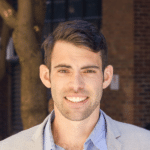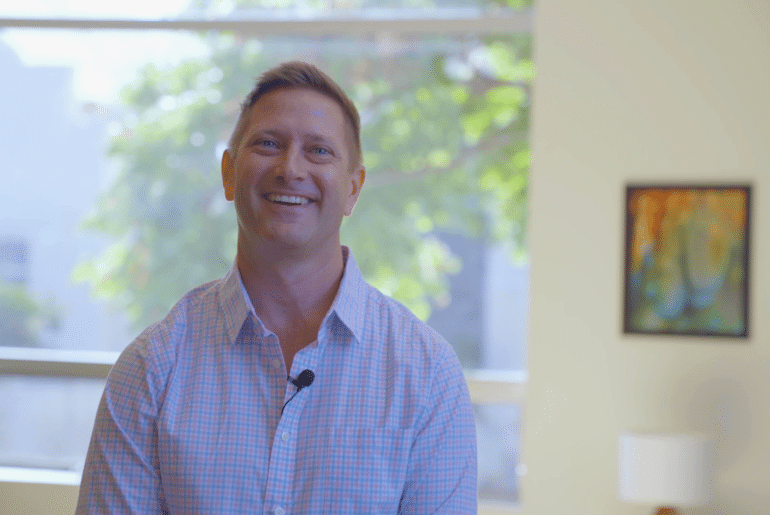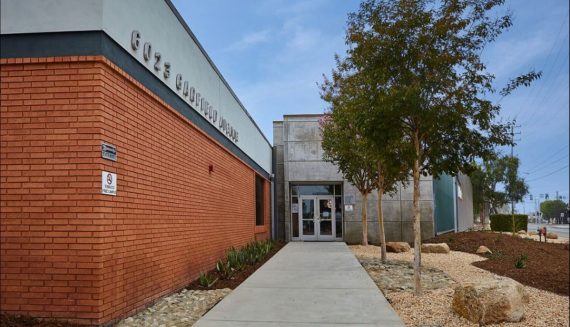The Chase Center officially achieved LEED Gold certification in July 2020, joining only four other NBA arenas that have achieved LEED Gold or higher to date. Given the low level of LEED certification across U.S. sports venues, it’s important to share lessons learned from the new home of the Golden State Warriors that can help other teams overcome the challenge of certification at sports arenas nationwide. So, we decided to sit down with the team that led the Chase Center through its sustainability pursuit: SSR and Stok.
SSR and Stok served as the sustainability consultants to the Warriors’ Chase Center and office tower projects. As LEED project facilitators, the team actively coordinated with the entire project team throughout design and construction to successfully complete a LEED campus application, resulting in three LEED Gold certifications thus far, including the Chase Center. Stok specifically provided Title 24 energy modeling and compliance services for the arena.
Here, Lindsey Nicholson, Sustainability Project Manager at SSR, and Jacob Arlein, Principal at Stok, share sustainability highlights and lessons learned.
WHAT WERE SOME OF THE UNIQUE CHALLENGES YOU FACED WITH THIS PROJECT?
Lindsey, SSR: Sustainable design of a sports facility is a challenge in and of itself. Arenas tend to excessively use water, generate an abundance of waste, and consume large amounts of energy. We helped the team to proactively design the building to reduce each of these conventional impacts.
Jacob, Stok: Proving Title 24 compliance for the arena was especially complicated. California has an exceedingly strict state energy code. That, combined with a very complex set of HVAC systems to serve the wide range of space types (the court, luxury boxes, food and retail stalls, walking areas, and more) and an abnormally high number of thermal zones, resulted in one of the most complicated Title 24 energy models ever created to show compliance.
WHAT INNOVATIVE SUSTAINABILITY FEATURES WERE EMPLOYED AT THE CHASE CENTER CAMPUS?
Lindsey, SSR: The Chase Center campus is designed to collect stormwater from the roofs, recover graywater from showers and lavatories, and reuse condensate from the Indirect-Direct Evaporative Cooling (IDEC) air handling units. The water travels through an on-site water treatment system before being pumped back into each buildings’ restroom flush fixtures.
Jacob, Stok: Yes, this recycled water system designed by SJ Engineers and BKF allowed the Chase Center to reduce on-site potable water consumption by over 84%.
WHAT WERE SOME OF THE COMPLICATIONS YOU ENCOUNTERED DUE TO THE SIZE AND COMPLEXITY OF THE PROJECT TEAM AND WHAT STRATEGIES DID YOU UTILIZE TO OVERCOME THOSE CHALLENGES?
Lindsey, SSR: With a very large and continuously growing project team, we had to be on our game at all times. Frequent communication was a must across all disciplines which led us to build strong relationships with team members quickly. Along with virtual meetings, working together in person despite coast-to-coast team members was a key asset during design.
Jacob, Stok: Strong coordination between the entire project team was essential and had to be especially seamless between SSR and Stok as collaborative leads for the sustainability pursuit. It required high meeting frequency to ensure we had all the documentation necessary and a constantly cohesive sustainability approach that could be easily messaged to the diverse team.
SAME FOR THE EXTENDED PROJECT SCHEDULE: WHAT WERE SOME OF THE COMPLICATIONS YOU ENCOUNTERED AND WHAT STRATEGIES DID YOU UTILIZE TO OVERCOME THOSE CHALLENGES?
Lindsey, SSR: An indisputable challenge of a lengthy project schedule is an ever-changing design. We continually collaborated with the design team to ensure all the project’s sustainability goals were maintained as design progressed, even into construction.
Jacob, Stok: Over the 7+ years that we worked on the project, Stok went through a period of significant growth and change. This change meant that we ended up having many different people at Stok who worked on the project. To ensure clean transitions between staff, we utilized our in-house project management tools to document meticulous notes related to all sustainability pursuit aspects. These notes proved helpful in ensuring consistent communication with the larger project team as our point of contacts for many of the consultants also changed.
WHAT WERE THE KEY LESSONS YOU LEARNED FROM THIS PROJECT?
Lindsey, SSR: Although a large project team was at times challenging, I also found collaborating with many individuals to be a benefit to the project based on the expertise each member brought to the table.
Jacob, Stok: California’s energy code is especially nuanced and understanding how to apply the specifics of the code to the unique design and construction of the arena complex was crucial. We learned that you should identify any prescriptive measures that the building will need to follow early so project leadership knows what to expect. For this project, the required National Fenestration Rating Council (NFRC) testing of the custom-built façade was something that many projects don’t often encounter but was necessary to ensure compliance.
As the green sports movement finally begins to hit mainstream, we’re excited for the Chase Center to serve as inspiration to high-achieving sports venues across the country. There’s still much to be done at the intersection of sports and sustainability, but we’re heading in the right direction when NBA champions can become LEED champions too.
Learn more about the Chase Center here and please get in touch with our team to talk further about sustainability in sports.



